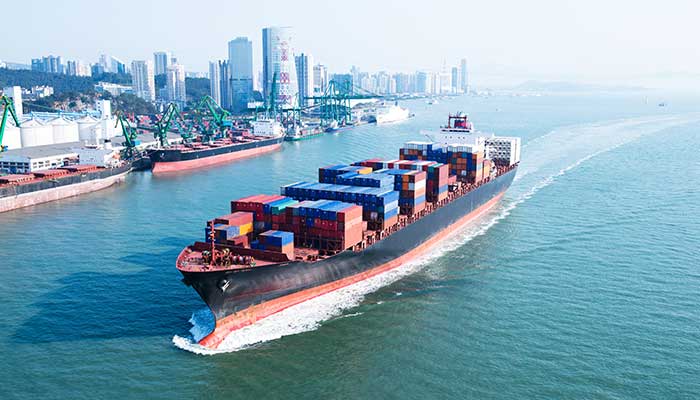The Covid-19 pandemic has forced governments around the world to spend large sums in an effort to stabilise their economies. In some countries, we are seeing wartime levels of spending, driving deficits, and public debt, to new highs. Globally the IMF estimates that the net public debt will rise from 69.4% of national income last year to 85.3% in 2020 — substantially more than in 2009 at the peak of the global financial crisis.
According to IMF fiscal monitor estimates, discretionary policy actions with direct impact on the budget sum up to $3.3trn. In addition, loans and equity injections amount to $1.8trn. And finally, guarantees represent $2.7trn. The sum is about $8trn, which corresponds to 9.5% of world GDP.
Many Asian governments, in a similar spirit, have turbocharged their issuance of dollar bonds as they seek to fortify their balance sheets and fund relief efforts during the pandemic. These governments are writing millions of cheques to households and firms in order to help them survive lockdown measures. In 2020 so far, Asian governments have issued more than $30bn — double the amount in the same period last year.
Dialogic data reveals Asian governments, excluding Japan, have raised $18.7bn in April. This is the fastest rate of borrowing in 10 years.
Singapore announced a fiscal stimulus plan of $41.6bn, pushing its GDP-to-debt ratio to 110%. Indonesia’s financing scheme to fight Covid-19 while increasing the debt burden through issuance of pandemic bonds and longest tenure bonds at 50 years. This enabled Indonesia to raise $4.3bn [including those for 10-and-a-half and 30-and-a-half years]. The Indonesian government has also scrapped temporarily the 3% of GDP budget deficit cap for 2020-2022 to give policymakers greater flexibility in responding to the pandemic, and is expected to push the budget deficit to 5.1% of GDP in 2020, from 2.2% in 2019.
In Japan, prime minister Shinzo Abe has committed to nearly $1trn in new deficit spending to protect a $5trn economy, a move that will push Japan’s debt ratio well above its record of 237%.
Malaysia is weathering the worst economic recession in its history, just as other developed nations are facing deep downturns, due to the Covid-19 pandemic. Malaysia's current debt ratio to its GDP stands at about 51% (the ceiling being 55%). Malaysia’s fiscal deficit is expected to widen to as much as 4.5% of GDP in 2020 compared to 3.4% in 2019.
“Economic history suggests that there will be a towering pile of IOUs left from the bills run up during the crisis”
Many of the Gulf countries may have low debt-to-GDP levels, but the recent sharp fall in oil prices is expected to hit reserves. The cumulative current-account balance for the nine MENA oil exporters will shift from a surplus of $4bn in 2019 to a deficit of $104bn in 2020, according to the Institute of International Finance.
The Saudi Arabian government will see its debt level rise to double its original size with plummeting oil prices, but it does not intend to tap into its reserves or liquidate assets. In wake of the announcement of a $32bn emergency package, the Saudi government has raised its debt ceiling from 30% of gross domestic product to 50%. The kingdom has about $500bn in foreign reserves, but analysts say the riyal-dollar peg could come under pressure if they were rapidly depleted.
Pakistan’s budget deficit is expected to rise to the highest level in history to 9.2% of the size of national economy. The country’s public debt is projected to increase to around 90% of GDP or Rs37.7 trillion in FY 2020, against 85% or Rs 35.6 trillion prior to the shock, due to a sharp decline in growth and an increase in budget deficit, according to the IMF.
India entered the crisis with a stretched financial position. Fitch Ratings estimates its ratio of public debt to GDP will rise to over 77% in 2020-21, from 71 percent estimated prior to the outbreak. The loss of revenue on account of the lockdown looks likely to take the combined fiscal deficit of the central and state governments for this fiscal year well beyond 10% of GDP, as against the budgeted 6.5%.
Asian governments indeed have announced fiscal actions on an enormous scale. That requires accurate accounting, frequent timely and transparent disclosure and the adoption of procedures ensuring ex-post evaluation and accountability. Principles of good governance should be reinforced in a way commensurate with a scale of the intervention. In order to make all of this memorable in a sentence, there it goes: “Do whatever it takes but make sure to keep the receipts.”
Economic history suggests that there will be a towering pile of IOUs left from the bills run up during the crisis. When it is over, Asian governments will have to figure out how to repay them – or whether to repay them at all.
That question will decide the complexion of their country politics, and the quality of their public infrastructure and services for years to come. Unless these governments tackle this issue, coronavirus debts will be the battering ram for a new campaign of austerity. The scale of the challenge is huge.
As the great Austrian economist Joseph Schumpeter remarked in the aftermath of the first world war, “the budget is the skeleton of the state stripped of all misleading ideologies”, the truest reflection of the distribution of power and influence It is a distributional issue. But not only that. Debts may also affect the size of the cake itself.















